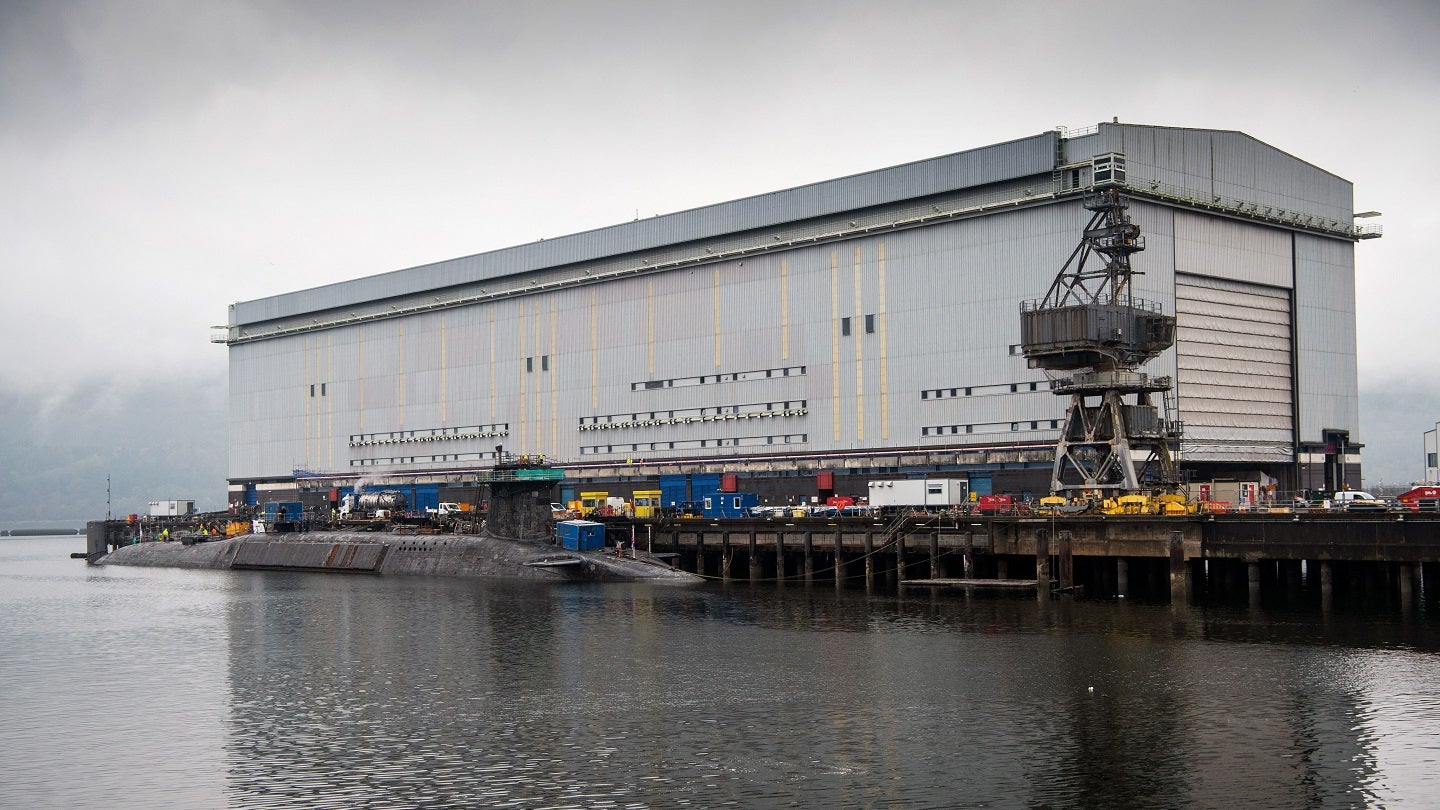
The UK Ministry of Defence (MoD) is looking to obtain two floating docks and associated infrastructure to be located at Clyde naval base, home of the UK’s nuclear deterrent and the Vanguard-class ballistic missile submarines (SSBN).
In a 7 November early engagement notice, the MoD stated that following completion of a period of market engagement with industry, the Authority intends to formally commence a procurement for the Additional Fleet Time Docking Capability (AFTDC) programme.
The MoD stated the purpose of the Prior Information Notice (PIN) “is to invite industry to participate in market engagement events” to be conducted by the AFTDC joint project team, which will “progressively mature in detail”, prior to the commencement of a future procurement.
An MoD spokesperson told Naval Technology that the AFTDC programme was “looking to enhance the out of water submarine maintenance capability and meeting future demand for submarine maintenance at His Majesty’s Naval Base Clyde.”
Market engagement ‘Event 1’ is planned for 7 December this year and will be a virtual briefing to industry participants who have registered to be involved in market engagement, where background on the AFTDC programme will be provided. The event will be followed up with further market engagement events focussing on one-to-one discussions between the MoD and industry.
Further, the MoD is “looking to engage with suppliers” that have the capability to design and build significant elements of the floating docks and associated infrastructure to participate in the market engagement stage of the AFTDC programme.
Subsequent evolutions of the engagement process would include discussions with required equipment and systems suppliers.
HM Naval Base Clyde – commonly known throughout the Royal Navy as Faslane – is the service’s main presence in Scotland and home to the core of the country’s subsurface fleet, including the SSBN-based nuclear deterrent, and the new generation of Astute class hunter-killer submarines (SSN).
The Royal Naval Armaments Depot at Coulport, eight miles from Faslane, is responsible for the storage, processing, maintenance and issue of key elements of the UK’s Trident nuclear-armed ballistic missiles and the ammunitioning of all submarine embarked weapons.
A job advert posted across a number of recruitment sites in October, since withdrawn or else no longer accepting applications, listed a requirement for a deputy head [of] capability integration – submarine fleet time docking, located at UK Navy Command Naval Base Clyde.
Babcock to add new capacity to Devonport dockyard
The move to acquire floating dock capacity at Clyde comes as other key sites in the UK’s nuclear submarine infrastructure are also expanding.
On 10 November, Babcock announced that it had signed a £750m contract to deliver “future submarine capability” infrastructure at its Devonport dockyard. The deal with the MoD’s Submarine Delivery Agency (SDA) would service to “sustain the UK’s submarines for decades to come”, the release stated.
The contract for the delivery of infrastructure to support submarine maintenance includes a dock and logistics and support facilities, and forms part of the site-wide infrastructure upgrade programme at Devonport to enable “the ongoing delivery of base maintenance periods and deep maintenance projects for current and future classes of submarine, including nuclear defuel”.
The reference to nuclear defuel could inform a future expansion of the UK’s efforts to dispose of dozens of decommissioned Royal Navy nuclear submarines still moored at sites in Devonport and Rosyth.
The MoD’s Submarine Dismantling Project is responsible for dismantling 27 nuclear submarines; 22 of which are decommissioned and have left service, while five currently continue to be operated by the Royal Navy. A test case being carried out on HMS Swiftsure is currently underway at Babcock’s Rosyth site, which could be expanded if provided successful.
Chris Gardner KBE, CEO of the SDA said the contract would “see the delivery of dock and infrastructure for our attack submarine deep maintenance projects later this decade”.
The Babcock release stated that supporting the company on “10 Dock” would be delivery partners Costain and Mott MacDonald, and main works contractor Kier BAM.







